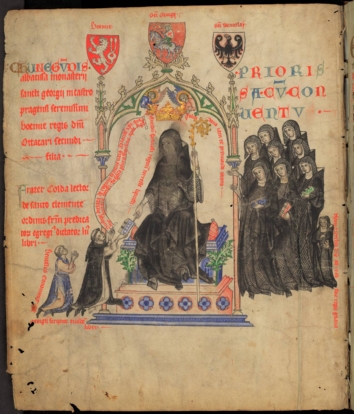
Contribution on roots of Czech cantiones just published in the prestigious musicological journal
The roots of the vibrant culture of cantiones, which developed fully in Bohemia from the second half of the 14th century onwards, are the subject of a paper by Hana Vlhová-Wörner, "Benedicamus Domino tropes in the monastery of Benedictine nuns at St George's, Prague", which has just been published in the prestigious journal Early Music (Oxford University Press). The paper is freely available at https://doi.org/10.1093/em/caac053.
The extraordinarily rich repertory of tropes for Benedicamus Domino has been known at the latest since Václav Plock's critical edition of 1985. The varied selection of melodies and poetic forms heard in the premises of this leading Czech Benedictine monastery clearly speaks against the prejudices formulated in the older literature, which quoted with a certain sneer medieval references to singing of nuns with 'croaky voices'. The research journey to find the sources of this remarkable collection leads in many cases west of the Rhine and reveals many surprises. If there were still doubts as to whether there was a book in Prague with motets before 1300, they are dispelled by a look at the trope of the Laus Domino resonet, which later developed to a popular cantio in Bohemia. And when might this repertoire have arrived in Bohemia? Possibly even in several waves, the first of them probably as early as the first half of the 13th century, along with the rich repertory of mass tropes that was introduced to the neighbouring St. Vitus Cathedral at this time.



